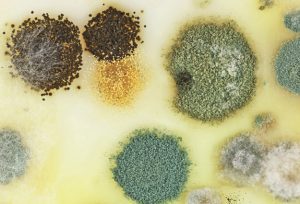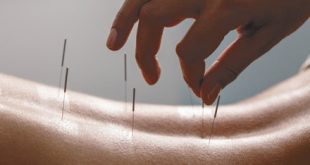By Julie S. Hurst- Nicoll, MBA, CMI, CMR – President, American Mold Experts


Yes your home is now mold safe but the key is understanding all the issues that can affect your home in the future and safeguarding your future. From the moment we compete the work recontamination can begin. Mold is everywhere. Have you considered all the issues that could potentially affect your living space:
1. Finding a great deal on a garage sale furniture or even new furniture that has been sitting in a warehouse that might not be climate controlled could easily transfer mold spores into your home.
2. Have you considered your auto is making you sick? Cars can get moisture in from rain and snow and create humidity to grow mold. Same for boats, campers and RV’s.
3. Have you considered your work environment may have mold in building or HVAC. Monitor humidity; look for roof leaks, stained drop down ceiling tiles or condensation moisture, dark stains on return air grates.
4. Has your vacuum been cleaned? Does your cleaning lady bring in her own vacuum or pole duster transferring spores from the previous home they cleaned?
5. What are you doing to eliminate dust? Mold feeds on dust.
6. Remember every time you enter your home from outside mold spores can remain on your clothes and enter your home. True for your pets too, bringing in mold spores.
7. Those that live in wooded areas will naturally have more mold spores around their home.
8. Those that love to nourish your landscape with wood mulch are actually providing more mold spores around the exterior of their home that can easily enter through entering a door. Be especially diligent when new mulch gets laid before it settles.
9. Condensation. Whether on windows, ductwork or plumbing pipes this added moisture can raise your humidity levels and provide the needed nutrition for mold to multiply.
10. Help your furnace help you. Be sure you are using at least a MERV 8 filter and change regularly. And when you change out be sure and put the old one in a sealed plastic bag before walking though your home to dispose of in your trash.
11. For as little as $10 you can purchase humidity meters to place throughout your home or office. Make sure the humidity stays below 60% at all times! Some common species of mold can grow and thrive just on high humidity.
12. Basements are notorious for humidity and even the best maintained finished basement can have leaks or sump pump failures. Keep on guard with humidity meters, have back up alarms on sump pumps and monitor humidity.
13. Monitor the humidity coming from your HVAC vents. If your air conditioning short cycles it may cool but not run long enough to remove the humidity. This can be due to your unit being oversized for the home or a fan speed issue. Another HVAC issue is keeping your home too warm when your AC is on. If your unit does not run often to dehumidify then high humidity will cause the most common mold species, that looks like dust to grow unnoticed. If you are one of those that were told to keep your fan on continuously versus auto is another problem we often see causing high humidity. When your system is on and the humidity it extracts from the air condensates in the unit. If when the system is off but the fan is still running the air blows over these wet coils putting humidity back into your home.
14. Make sure you keep your crawl space vapor barrier in good shape and contractors that might be in there like a plumber does not move it about providing for uncovered areas that can allow earth humidity to rise and increase the humidity within your home.
15. Check your downspouts to be sure they extend from your structure and don’t dislodge during mowing or storms.
16. Always be on the look out for excess moisture:
. Disconnected dryer vents
. Icemaker line leaks
. Plumbing leaks
. Roof or chimney leaks
. Windows excess condensation
. Toilet seal leaks
. Tub/shower leaks or escaping water during a bath or shower
. Dishwasher or clothes washer leaks
. Wet towels, swimsuits, athletic clothes
Once you have been affected by mold or the mycotoxins they produce there is a new realization that you must now be more conscious with humidity and water leaks. This list certainly is not exhaustive but can provide a checklist to review. If you have any questions, please contact us.
Call today to schedule an assessment!
239-572-2216 or visit www.AMEswf.com
Julie S. Hurst- Nicoll, MBA, CMI, CMR
President, American Mold Experts
Serving Central Indiana & Southwest Florida
(Other States for Mold Toxic Patients/Clients Upon Arrangement)
Mold Inspections, Testing & NON-Destructive Remediation
Clearance Testing is ALWAYS INCLUDED in Warranted Jobs (excluding States that forbid clearance by Remediation
Company, ie Florida)
A+ Accredited Better Business Bureau (BBB)
IICRC Certified Company
FL License MRSA 3097, MRSR 3248
 Southwest Florida's Health and Wellness Magazine Health and Wellness Articles
Southwest Florida's Health and Wellness Magazine Health and Wellness Articles

